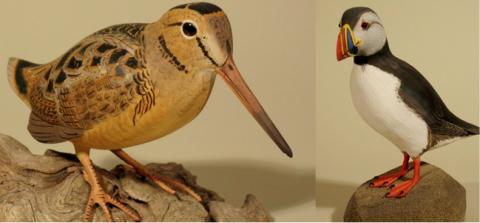Adrift in the Atlantic Ocean a very good stone’s throw off the Maine coast, lobster-claw-shaped Mount Desert is the third largest island off the East Coast. A rumpled, and at times angular, landscape of granite, timber and water, the island stood up to glaciers thousands of years ago and today endures constant beatings from the Atlantic.
Embracing most of the island’s eastern half is Acadia National Park, a gem of the park system that still holds the magic I first witnessed some four decades ago as a young boy when our family drove north from New Jersey to explore Maine’s coast.

The Somesville Bridge finds its way into most park visitors' cameras. Kurt Repanshek photo.
Though coastal Maine can be wet as showers, thunderstorms and banks of fog often sock it in every few days, that doesn’t stop Mount Desert Island’s visitors. Rather, poor weather is a perfect time to visit the island’s western half, known as the “quiet side.” This part of Mount Desert Island is just that, a pastoral landscape with a very small handful of charming waterfront towns.
Bar Harbor may be the resort community on the island, full of excellent restaurants, art galleries and unique gift shops, but Bass Harbor, Southwest Harbor and Northeast Harbor each holds its surprises – a quaint restaurant here, wonderful artisan shop there, beautiful public garden over there.
Near the center of the island rises Somesville, a small village notable not only for being at the head of Somes Sound, a fjord-like body of water, but also for being home to one of the most picturesque footbridges in New England.
A short drive south down Route 102 brings you to Southwest Harbor, where you'll find a museum reflecting the passion of one of the country's best miniature bird carvers.
At Southwest Harbor, duck into the Wendell Gilley Museum, a squat, unobtrusive building on the leafy corner of Main and Herrick. Inside, expect to be overwhelmed by flights of amazingly detailed owls, godwits, loons, curlews, eagles, mergansers, grosbeaks, chickadees, warblers and dozens of other tenderly carved species that Gilley—inspired by a carver from Cape Cod, A. Elmer Crowell—produced during a five-decade-long career that started in the 1930s and saw him recognized as one of the country’s best bird carvers.

Steve Valleau often can be found carving in the museum. Kurt Repanshek photo.
Most of the carvings are miniatures that could rest in the palm of your hand, though others are full-sized. Along with Gilley's carvings are those from local and regional carvers, though some come from as far away as Maryland.
One big Gilley fan is Steve Valleau, who fell in love with carving when as a boy he read Gilley’s book on the craft, and then had a chance to meet the carver.
"I went into the shop before the museum was built and talked to him for a couple of hours," he recalls.
Today, with nearly 40 years of cutting, whittling, and sanding wood blocks into birds, Valleau is the museum’s carver-in-residence. In a room off the back of a museum, he's perched over a table strewn with wood chips, rasps, swatches of sandpaper, and miniatures in various stages of completion where all can watch as he carves and sands and carves some more.
Often using stuffed birds as models, he slowly coaxes beaks, eye sockets, and feathers out of the wood. Glass eyes later will be added.
“You have to know your subject,” he says, pausing from sanding the neck of a duck. “You have to have good reference material, and you have to know how to paint. That’s the hardest part.”
Many carvers, Valleau tells me, turn to their wives for the painstaking task of painting the finished carving, so they can move on to another bird.
Choosing the right type of wood is just as important as having an artistically inclined partner, too. White cedar goes into most decoys, while basswood, a somewhat soft wood free of pitch and boasting a tight grain, is a great choice for miniatures. From start to finish, it typically takes Valleau three days to turn the wood into a miniature.
Back out in the main area of the museum, miniatures seem to be flying in all directions.

The carvings found throughout the museum features birds in natural poses. Photo courtesy of Wendell Gilley Museum.
While a large bald eagle taking wing serves as something of a centerpiece, showcases that line the walls display songbirds, waterfowl, raptors, waders, and more in various poses and postures. There's a roadrunner in mid-stride, an inquisitive looking puffin, gulls captured in all their raucousness, preening ducks, and woodpeckers doing what comes naturally.
In the small giftshop you can purchase books on carving, carving materials, and, of course, miniatures. For visitors interested in learning the craft, the museum offers workshops. If you've got more time on your hands, there are longer classes during the off-season.
If You Go
* Admission: Adults, $5; Kids 5-12, $2; under 5 free.
* Hours: June-October, Open Tuesday-Saturday, 10 a.m.-4 p.m. (5 p.m. in July and August); May, November-December, Friday-Sunday, 10 a.m.-4 p.m.
* Directions: The museum is 25 minutes from Bar Harbor via Routes 233, 198 and 102. During the summer season, the free Island Explorer shuttles (bus route 7) stop in front of the museum.




Add comment